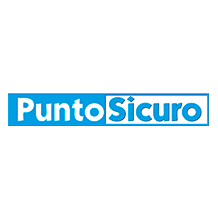14/02/2024
The complexities of digital platform work analysed by EU-OSHA expert and PuntoSicuro

In a new interview with our media partner PuntoSicuro, Dr. Maurizio Curtarelli, Senior Research Project Manager in the Prevention and Research Unit at EU-OSHA, explores the newly launched priority area digital platform work, shedding light on its prevalence, benefits, challenges and risks, as well as the need for transparent and fair practices.
, once a niche phenomenon, is now becoming an important type of modern employment. Dr. Curtarelli explains its essence, describing it as any type of paid labour facilitated through digital platforms. It involves a triangular working relationship between the workers, the clients, and the platform itself, spanning sectors from technical services to hospitality.
The expert points to the unique risks brought by such work such as the burden of continuous engagement on platforms, where workers constantly seek job opportunities to maintain their profile and ratings, crucial for securing future assignments. Moreover, , characterised by untransparent algorithms dictating task allocation, further diminishes worker autonomy, creativity, flexibility, and increases work pace and intensity.
Significantly, Dr. Curtarelli goes on to underline the debatable employment status of platform workers, with many classified as self-employed, thereby lacking the protections provided by traditional occupational safety and health legislation. Additionally, the absence of vertical career structures within platform work leads to career stagnation and social isolation, posing certain psychosocial risks.
Highlighting legislative efforts in Italy and across Europe, the Agency’s expert notes the importance of . Recent measures mandate platforms to disclose algorithmic functioning, empowering workers and regulators to scrutinise task allocation processes. These developments reflect the growing awareness of this issue as well as the timeliness of the new campaign.
Indeed, when it comes to , Dr. Curtarelli argues that workers and their representatives can play a pivotal role by engaging in design. This involvement ensures that technologies align with human-centric principles and safeguard the wellbeing of workers.
Concluding the interview, the expert points to a wealth of resources available through EU-OSHA and campaign websites, including such publications as case studies showcasing how challenges associated with platform work can be mitigated. These encompass interventions by both platforms and trade unions, as well as grassroots initiatives fostering worker solidarity and advocacy.
The full interview can be accessed in Italian on PuntoSicuro's website.
